Cargo Lashing Guide
FIVE CARGO SECURING METHODS
Goods shall be prevented from sliding and tipping forward, rearward, and sideways directions by any of the following methods, combined in a proper way.
1. BLOCKING & BRACING
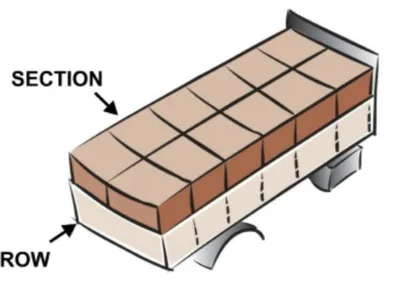
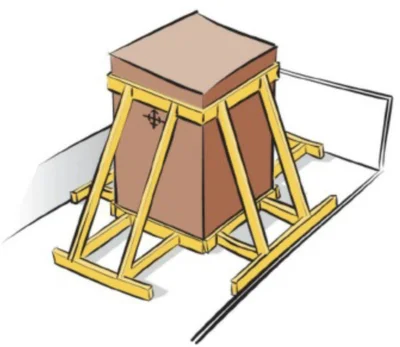
Blocking means that the cargo is stowed against fixed blocking structures and fixtures on the Cargo Transport Unit (CTU). Clumps wedges, dunnage bags and other devices which are supported directly or indirectly by fixed blocking structures are also considered as blocking. Blocking is primarily a method to prevent the cargo from sliding, but if the blocking reaches up to or above the cargo´s centre of gravity, it also prevents tipping. Blocking is the primary method for cargo securing and should be used as far as possible. When blocking, the sum of void space between cargo units is recommended not to exceed 8 cm in longitudinal or transverse directions. Void space shall always be minimised when heavy and rigid goods are being blocked.
2. TOP-OVER LASHING
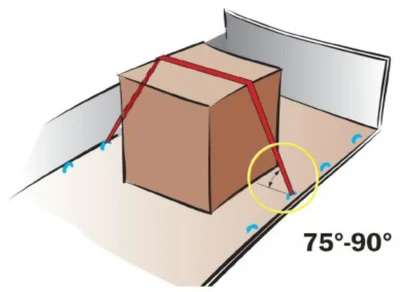
The allowable areas for fixing lashings on the cargo unit are bounded by straight lines (one for each side), drawn through the centre of gravity in an angle of 45°. The tables are valid for an angle of 30-60° between the lashing and the platform bed. Sideways and lengthways the lashing angle should lie between 30-60°. If the cargo unit is blocked forward and rearward and the lashings are placed with an angle of 90° towards the longitudinal axle, the cargo weight in the tables may be doubled. When the lashings are fixed above the centre of gravity, the unit may also have to be blocked at the bottom to prevent sliding.
3. LOOP LASHING
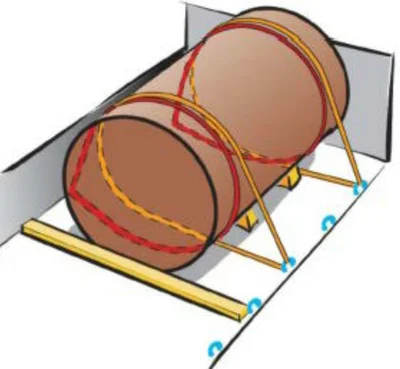

A pair of loop lashings prevents cargo from sliding and tipping sideways. Minimum one pair of loop lashings per section should be used. When long cargo units are secured with loop lashings, at least two pairs should be used to prevent the cargo from twisting.
4. STRAIGHT LASHING
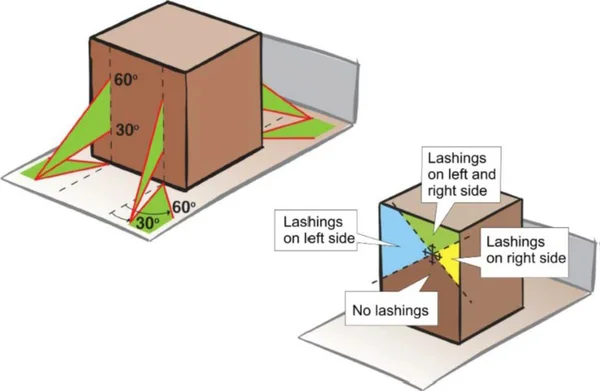
The allowable areas for fixing lashings on the cargo unit are bounded by straight lines (one for each side), drawn through the centre of gravity in an angle of 45°. The tables are valid for an angle of 30-60° between the lashing and the platform bed. Sideways and lengthways the lashing angle should lie between 30-60°. If the cargo unit is blocked forward and rearward and the lashings are placed with an angle of 90° towards the longitudinal axle, the cargo weight in the tables may be doubled. When the lashings are fixed above the centre of gravity, the unit may also have to be blocked at the bottom to prevent sliding.
5. SPRING LASHING
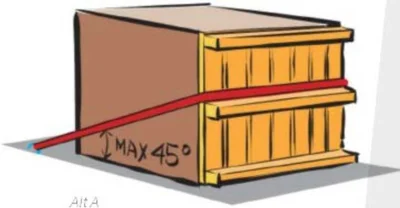

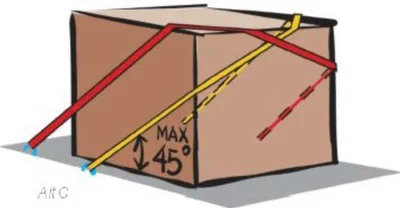
Observe:
- Alternative A is not fully effective for tipping avoidance.
- Alternative C has two parts per side and thus secures twice the cargo weight given in the lashing tables.
Spring lashings are used to prevent cargo from sliding and tipping forward or rearward. The angle between the lashing and the platform bed should be maximum 45°. There are a number of ways to apply spring lashings, as illustrated above. If the spring lashing doesn't act on the top of the cargo, the weight prevented from tipping is decreased. E.g. if the spring lashing acts at half the cargo height, it secures half the cargo weight given in the tipping tables. To prevent tipping, the spring lashing has to be dimensioned for the weight of the outer section only.
BASIC CARGO SECURING REQUIREMENTS
NON-RIGID GOODS
If the goods are not rigid in form (bags, bales etc.) more lashings than prescribed in this quick lashing guide may be needed.
ROLLING UNITS
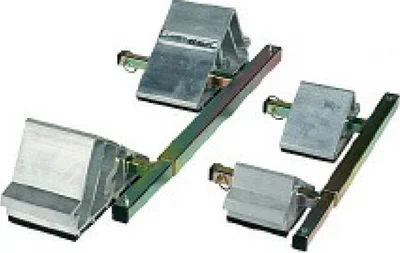
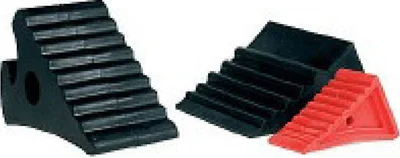
If wheeled units aren't blocked, rollstoppers, or chocks with a height of at least 1/3 the wheel radius, shall be used. If the unit is secured by lashings ensuring that the wheels cannot roll out of the chocks, the chock height is recommended not to be greater than 20 cm.
BOTTOM BLOCKING
Bottom blocking preventing cargo from sliding must have a height of at least 5 cm unless the cargo is prevented to move above the block by suitable lashings.
SUPPORTING EDGE BEAM
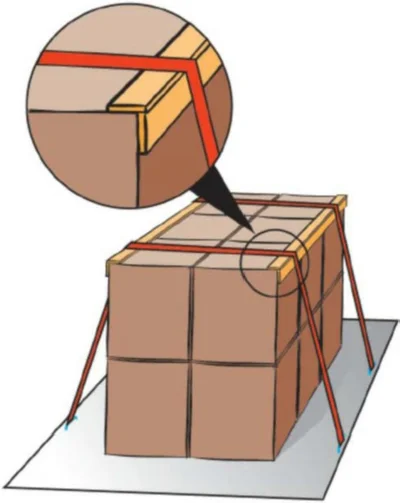
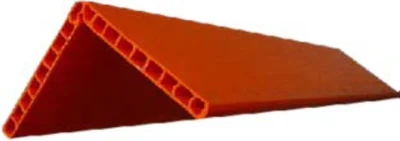
In some cases, fewer lashings are needed than the number of sections that are to be secured.
Since each unit must be secured, the lashing effect may in these cases be spread out by supporting edge beams.
WEAR & TEAR OF LASHING EQUIPMENT
If any of the following deficiencies are found, the lashings should be replaced:
| Edge damage | Cut damage | Wear damage | Tear damage | Dirt level & age | Broken or damage links |
|---|---|---|---|---|---|
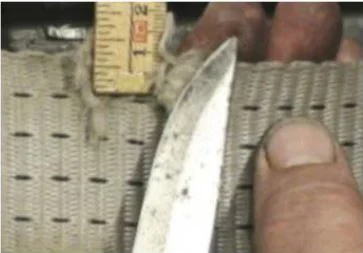 |
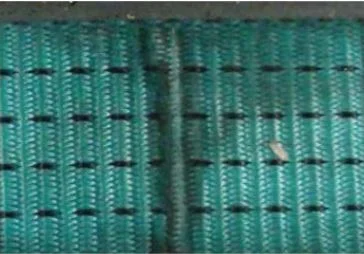 |
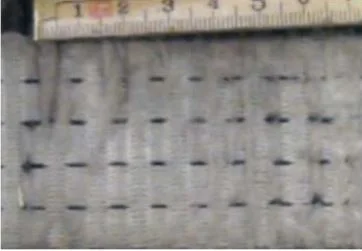 |
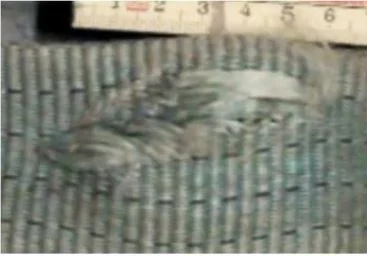 |
 |
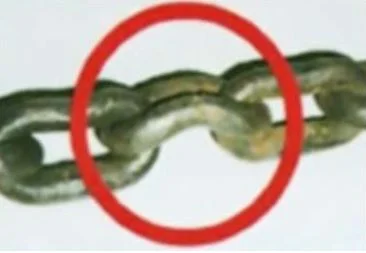 |
SLIDING FRICTION
Different material contacts have different coefficients of friction. The table below shows recommended values for the static coefficient of friction. The values are valid only if both contact surfaces are clean and free from frost, ice and snow.
| Material combination in contact area | Dry | Wet |
|---|---|---|
| SAWN TIMBER/WOODEN PALLET | ||
| Sawn timber against plywood/plyfa/,wood | 0.5 |
0.45 |
| Sawn timber against grooved aluminium | 0.4 | 0.4 |
| Sawn timber against stainless steel sheet | 0.4 | 0.3 |
| Sawn timber against shrink film | 0.3 | 0.3 |
| CARDBOARD (UNTREATED)" | ||
| Cardboard against cardboard | 0.5 | - |
| Cardboard against wooden pallet | 0.5 | - |
| BIG BAG | ||
| Big bag against wooden pallet | 0.4 | - |
| STEEL AND SHEET METAL | ||
| Flat steel against sawn timber | 0.5 | - |
| Unpainted sheet metal against sawn timber | 0.5 | - |
| Painted rough sheet metal against sawn timber | 0.5 | - |
| Unpainted rough sheet metal against unpainted rough sheet metal | 0.4 | - |
| Painted rough sheet metal against painted rough sheet metal | 0.3 | - |
| Painted metal barrel against painted metal barrel | 0.2 | - |
| PLASTIC PALLETS | ||
| Plastic pallet against plywood/plyfa/wood | 0.2 | 0.2 |
| Plastic pallet against grooved aluminium | 0.15 | 0.15 |
| Plastic pallet against steel sheet | 0.15 | 0.15 |
| STEEL CRATES | ||
| Steel crate against plywood/plyfa/wood | 0.45 | 0.45 |
| Steel crate against grooved aluminium | 0.3 | 0.3 |
| Steel crate against steel sheet | 0.2 | 0.2 |
| CONCRETE | ||
| Rough concrete against sawn wood battens | 0.7 | 0.7 |
| Smooth concrete against sawn wood battens | 0.55 | 0.55 |
| ANTI-SLIP MATERIAL | ||
| Rubber against other materials | 0.6 | 0.6 |
| Forankra Friction board against other materials | 0.65 | 0.65 |
When a combination of contact surfaces is missing in the table above or if its coefficient of friction can't be verified in another way, the maximum allowed μ-static to be used is 0.2. For open CTUs, it shall always be considered that the surfaces could become wet during transport. The friction values for wet surfaces in the table above may be used provided that the applicable national regulations allows for other frictions than 0.3 to be used for wet surfaces during sea transport.
TIPPING
 |
The definition of H, W and L to use for tipping when the centre of gravity is in the geometrical centre is shown in the figures to the left (left and center). The definition of H, W and L to use for tipping of cargo units with the centre of gravity away from its geometrical centre is shown in the figure to the right.
|
|---|
WANDERING
|
If there is no risk of sliding or tipping the goods may be transported without lashings. However, since unlashed goods may wander during transport, the free space between goods and blocking arrangement in sideway directions shall be maximum 30 cm. For goods stowed in an upper layer the free space shall be maximum 30 cm or ¼ the unit's width. If no blocking arrangements are utilized or if the free space is greater than allowed, at least one top-over lashing per every 4 ton of cargo shall be used to prevent wandering. |
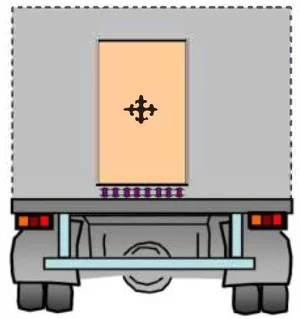 |
|---|
DIMENSIONING PRINCIPLES
This Quick Lashing Guide has been based on the principles in following documents:
- The European standard EN 12195-1 (2010)
- IMO/ILO/UN EGE Guidelines for Packing of Cargo Transport Units including IMO Model Course 3.18.
The values indicating secured cargo weight in the tables on page 20 through 25 (see PDF for page numbers) in this guide have been calculated so that both these documents are complied with for road transport. For sea transport, only the IMO/ILO/UNECE Guideline has been considered.
The following accelerations, expressed in parts of the gravity acceleration (1 g = 9. 81 m/s2), have been used when calculating the secured cargo weights for Forankra cargo securing equipment:
| Mode of transport | SIDEWAYS | FORWARD | REARWARD | |||
|---|---|---|---|---|---|---|
| S | V | F | V | R | V | |
| Road | 0.5/0.6* | 1.0 | 0.8**/1.0*** | 1.0 | 0.5 | 1.0 |
| Sea Area A (Baltic Sea) | 0.5 | 1.0 | 0.3 | 0.5 | 0.3 | 0.5 |
V = Vertical acceleration to be used in combination with horizontal accelerations sideways, forward and rearward.
* To be used for tipping in accordance with EN 12195-1 (2010)
** To be used according to EN 12195-1 (2010)
*** To be used according to IMO/ILO/UN EGE Guideline
All references regarding ton are based on metric ton of 1000 kg.
REQUIRED NUMBER OF LASHINGS
The required number of lashings to prevent sliding and tipping is calculated by the tables on page 20-23 (see PDF for page numbers) according to the following procedure:
- Calculate the required number of lashings to prevent sliding.
- Calculate the required number of lashings to prevent tipping.
- The largest number of the above is selected.
The lashing tables are based on data for LASHING CLAW FORANKRA VL500. If other lashing devices are used, the secured cargo weight should be multiplied with the conversion factors given on page 18-19 (see PDF for page numbers).
LASHING CLAW FORANKRA VL500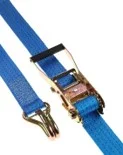
MBL = Minimum Break Load = 4,000 daN
LC = Lashing Capacity = 2,000 daN
STF = Standard Tension Force = 400 daN
BF = Breaking Force = 5000 kg
1 daN = 1 kg
CARGO IN MULTIPLE LAYERS
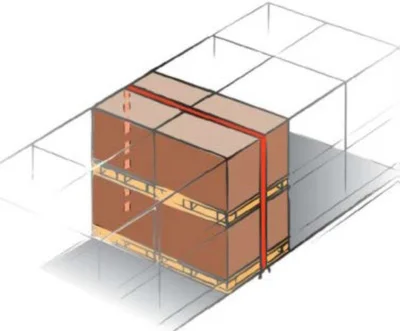
When calculating the number of required top-over lashings for cargo stowed in more than one layer, the following steps should be followed:
- Determine the number of lashings to prevent sliding using the weight of the entire section and the friction for the bottom layer.
- Determine the number of lashings to prevent sliding using the weight of the section's upper layer and the friction between the layers.
- Determine the number of lashings for the e
